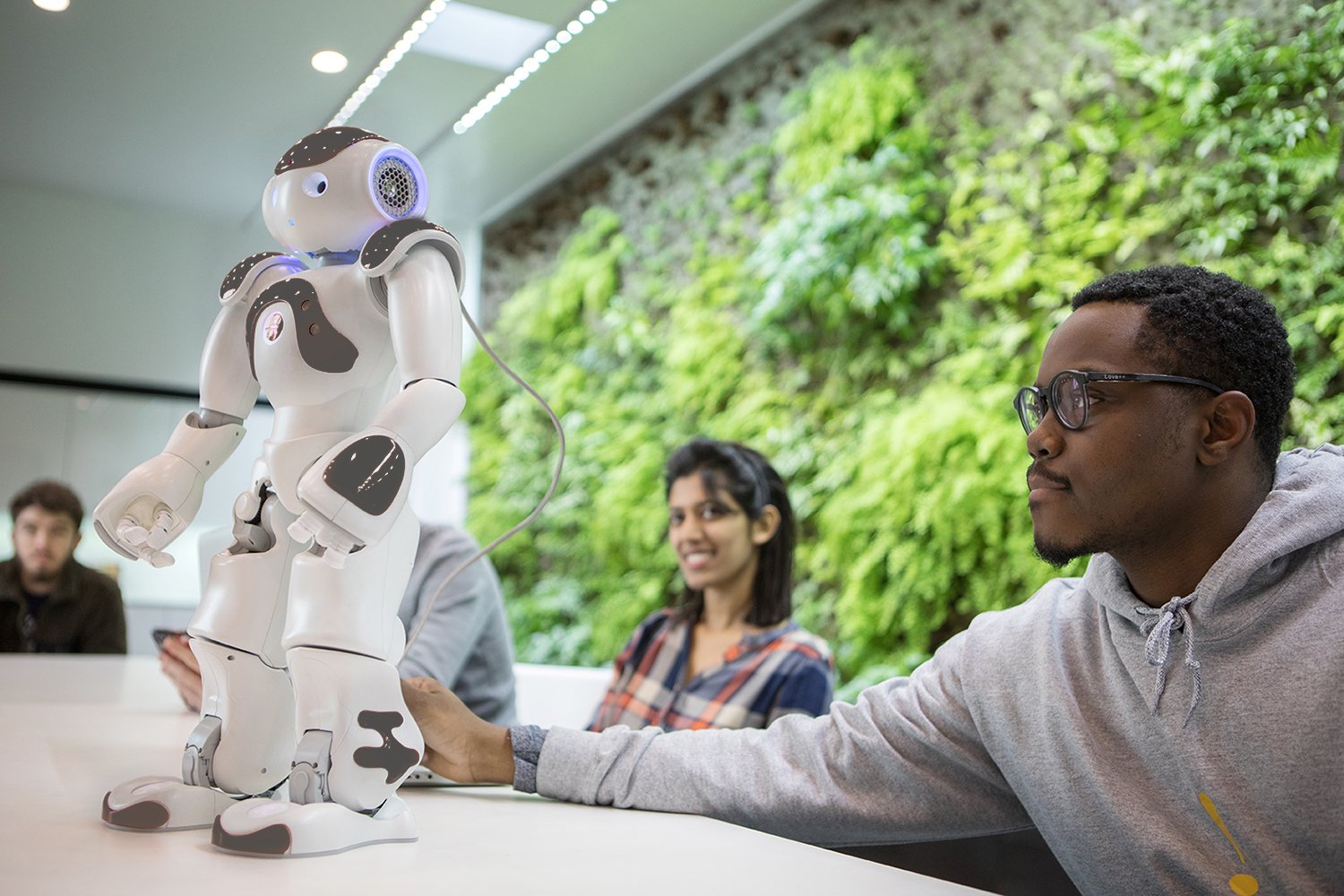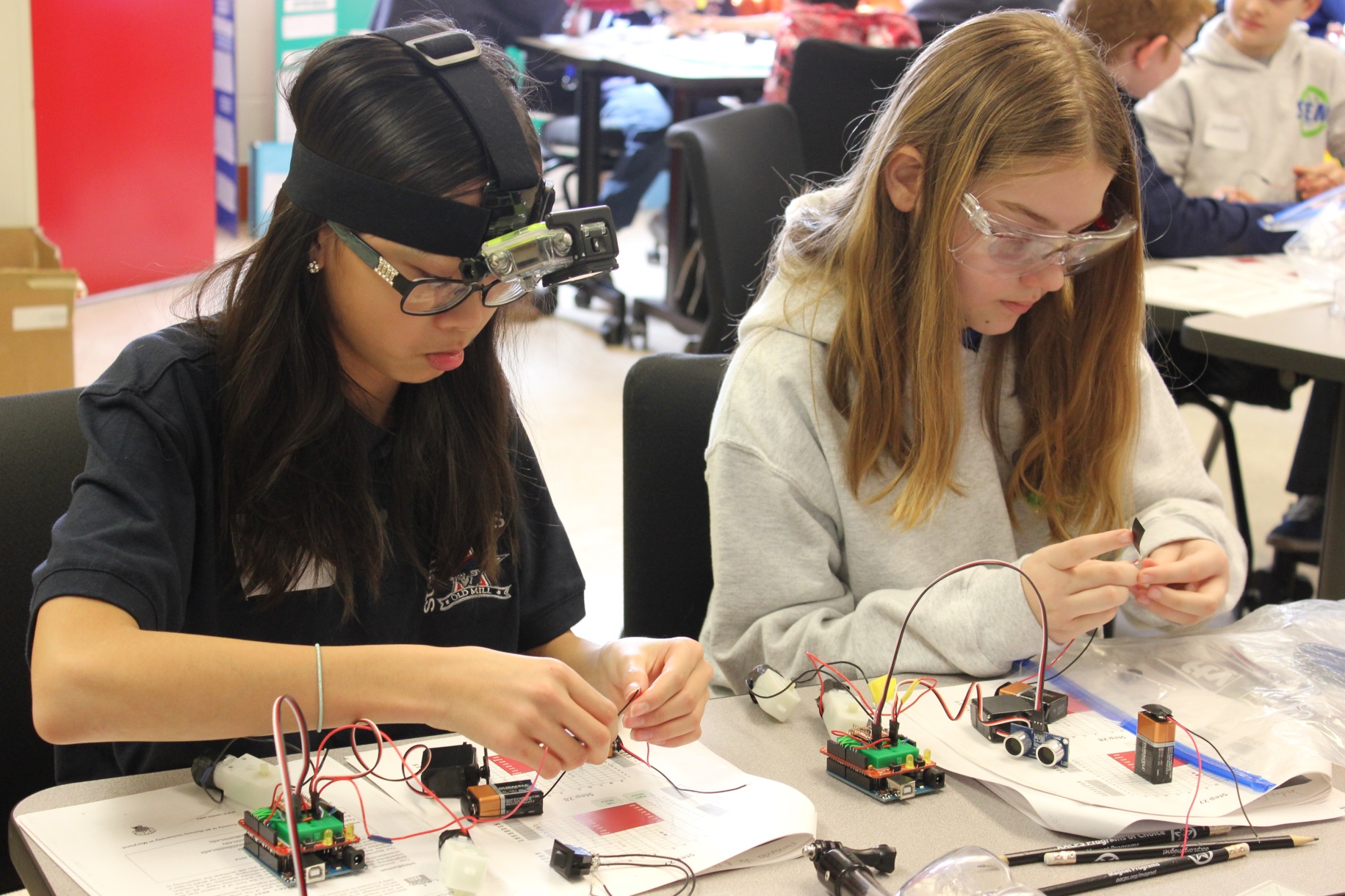
According to a study from the McKinsey Global Institute, robots may replace human workers in as many as 800 million jobs by 2030. Over the next 12 years, there will be a higher demand than ever before for robotic engineers. After all, someone needs to design these robots and be able to fix them if they break down. Learning robotics can help students succeed in the future by preparing them to enter an expanding field that will require an increasingly difficult skill set.
It’s important to teach students about robotic engineering in the classroom, not just outside of it. Many students may not know about the opportunities that could be available to them, or how to get involved with robotic engineering.
Perhaps the most exciting way to get students involved with robotics is to have a lab or hands-on lesson. Start small, and build progressively complex lessons from there.
There are endless ways to teach robotics in the classroom; from coding virtual robots to building robots in-person, there are a lot of robotics projects that will amaze students. Coding and virtual robot-building is vital to how robots work, and will teach students skills they can use in their future jobs.
Showing students what working with robots is actually like will give them a chance to engage with a potential career or field of study. For students who aren’t interested in robotics or STEM, they get to have a fun lesson. But for students who are considering further studies in this field, this is a chance to learn more about their prospective disciplines.
For interested students, discuss how to pursue a career as a robotic engineer. Help them find colleges with good robotics programs, and let them know there are ways to pay for college, even if it seems completely unaffordable. The opportunities in this field will continue to expand, so students will likely get back any investments made into their education. Though students are not guaranteed a position post-graduation, they have many options for what kinds of jobs they want to pursue.
A multitude of industries already utilize robotics, and that number will increase as other fields incorporate automated positions. Some career paths for students to consider include:
-
Software Engineering
Software engineers are in increasingly high demand, due to continual technological innovations. From creating code for applications and websites to more artistic pursuits like animation, there is a plethora of opportunities available to software engineers who understand the virtual side of robotics.
-
Health Care
The healthcare industry has become increasingly digital and has additionally incorporated the use of robots. Robots are used for rehabilitation, surgery, and everything in between. Rather than replacing human positions, they’re used to make jobs easier.
-
Government
Robotic engineering opportunities are abundant in the federal government. Of course, NASA uses robots when exploring other planets, but the military also uses robotics more and more. In particular, they use drones for surveillance and to assess disaster areas.
-
Food Preparation
Robots may soon be the latest addition to your favorite restaurant. Though the technology is still (mostly) in development, some dining establishments are already testing out the use of robots in the kitchen. For example, the world’s first burger-flipping robot, Flippy, began work in March of this year.
-
Manufacturing
Automation in manufacturing is nothing new, but the way it’s used now differs from the introduction of the conveyor belt and automatic machinery. Robots in manufacturing are outfitted to work in conjunction with their human co-workers and may come equipped with sensors and cameras to avoid conflict.
Introducing students to robotics, engineering, and virtual robots
These are just a few fields that currently use robotics, and by extension, robotic engineers. As the technology becomes more sophisticated and our society finds even more uses for it, we will need more robotic engineers to help meet the growing demand. Help inspire the next generation of engineers by introducing students to robotics today.

Discover more about robotics with RobotLAB!
Take a look to our Catalog and discover different products for your classroom and engage your students with robots! Looking for robotics lessons? Discover Engage!K12 our online platform ready to teach curricula!



